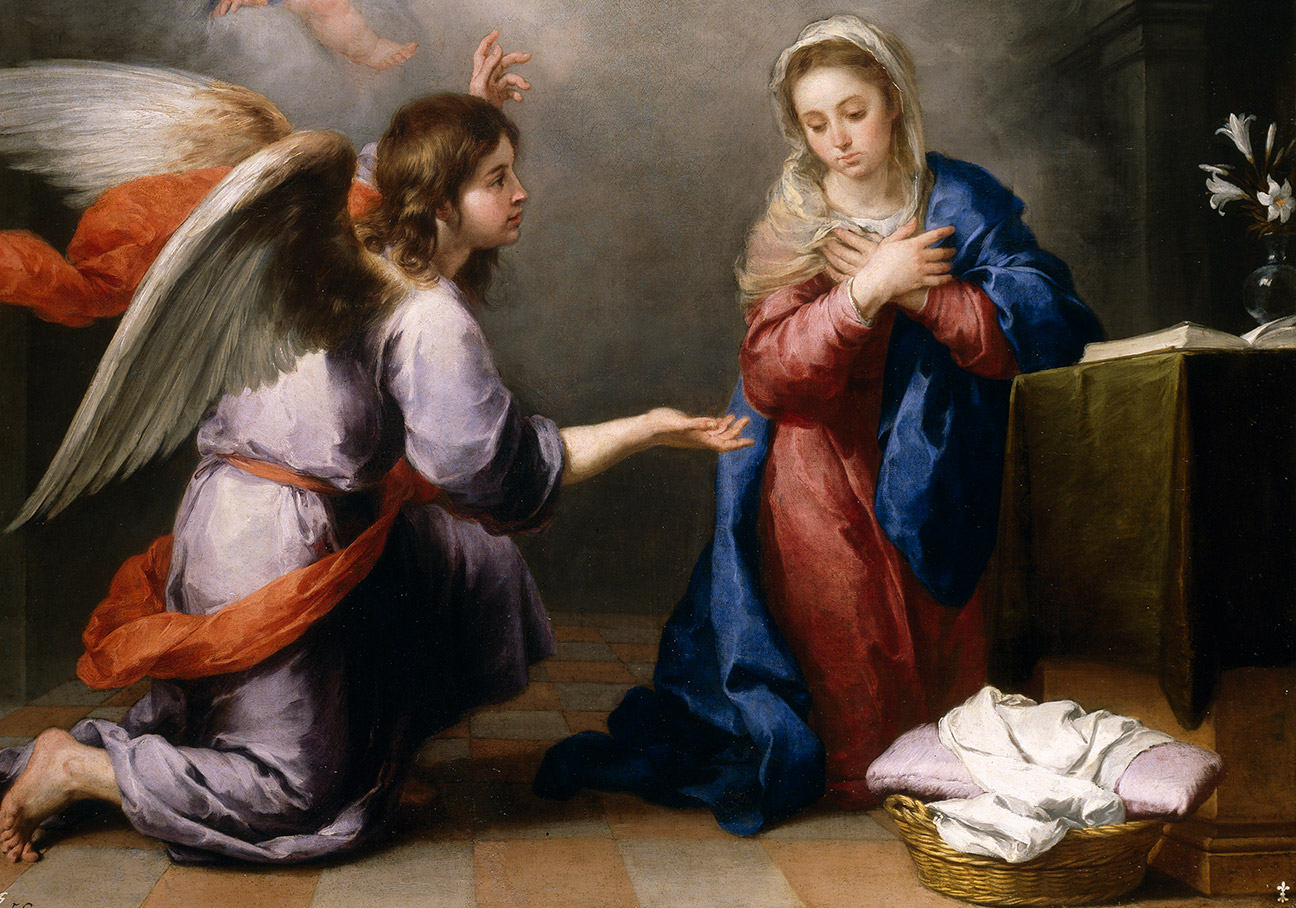
DECEMBER 22
View the Full Advent Calendar
The Virgin Mary Had a Baby Boy
Artwork:
The Annunciation by Bartolomé Esteban Murillo, (1660) is an oil on canvas painting in the Baroque style. Housed in Rijksmuseum, Amsterdam, Netherlands, Murillo’s devotional straightforward work portrays a New Testament scene that depicts the Archangel Gabriel´s Annunciation to the Virgin Mary. The Virgin is accompanied by three traditional attributes: a sewing basket and book, which symbolize her hard work and devotion; and a spray of lilies, which symbolize her purity.
Carol Text: West Indies, 19th C.
Carol Melody: West Indies, 19th C.
Piano accompaniment by Lezlie Taguding
![]()
The Virgin Mary had a baby boy
The Virgin Mary had a baby boy
The Virgin Mary had a baby boy
And they say that his name is Jesus
Chorus:
He came from the glory
He came from the glorious kingdom
He came from the glory
He came from the glorious kingdom
Oh yes, believer!
Oh yes, believer!
He came from the glory
He came from the glorious kingdom
![]()
The angels sang when the baby born
The angels sang when the baby born
The angels sang when the baby born
And proclaimed him the Savior Jesus.
![]()
The wise men saw where the baby born
The wise men saw where the baby born
The wise men saw where the baby born
And they say that his name was Jesus.
“How will this be,” Mary asked the angel, “since I am a virgin?” The angel answered, “The Holy Spirit will come on you, and the power of the Most High will overshadow you. so the holy one to be born will be called the Son of God.”
- Luke 1:34-35
Advent Devotional
Sometimes as Christians, we tend to overcomplicate doctrine. The portion of the Nicene Creed concerning Jesus states that, “by the power of the Holy Spirit he became incarnate from the Virgin Mary and was made man.” Millions of Christians around the world repeat these lines from the Creed every Sunday. God became human. We have an incarnational faith and that matters.
Instead of complicating the Incarnation of Jesus Christ, this carol simplifies it. Not much is known about the history of this song other that it originated in the West Indies, most likely Trinidad. It was made popular when singer Harry Belafonte recorded it in 1958. Each verse contains a simple refrain repeated three times. These three refrains, combined with the melodic steel drums characteristic of Caribbean music, make this carol especially attractive for children. What better introduction to the Christological principle that Jesus is both human and divine than the straightforward words, “The Virgin Mary had a baby boy.” Christ, who was present at the creation of the world, can now be known definitively and personally. C.S. Lewis’s good friend, Sister Penelope Lawson once wrote that, “for in the humanity of Jesus God sat again for his portrait, and this time it was a perfect likeness.”
Prayer
Thank you, Father,
for sending us Your Son.
As we reflect on Christmas,
I celebrate the birth of this baby boy,
the promised Savior and King,
fully human and
yet fully God.

Joseph A. Kohm
Vice President for Development, CSLI & CSLI City Director, Virginia BeachJoseph A. Kohm, C.S. Lewis Institute Vice President for Development and City Director for Virginia Beach. Joe is an attorney and formerly worked as a Certified Major League Baseball Player Agent. He earned his Master’s in Management Science from the State University of New York at Oswego and both his J.D. and M.Div. from Regent University. Joe is the author of The Unknown Garden of Another’s Heart: The Surprising Friendship between C.S. Lewis and Arthur Greeves (Wipf and Stock, 2022.)




